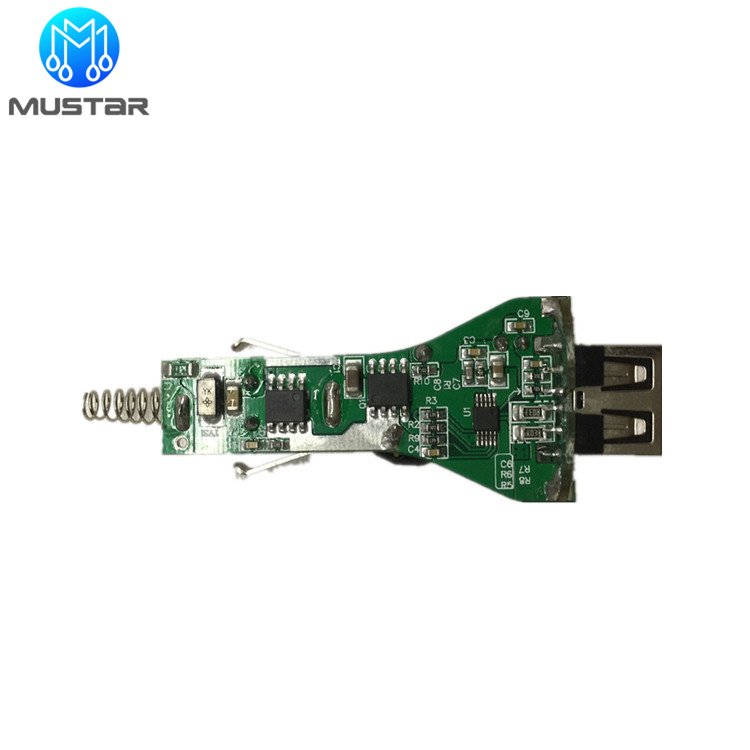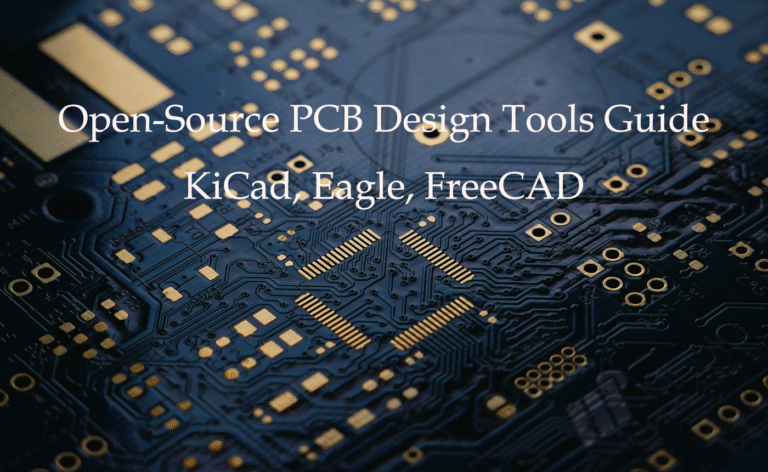🚀 Flex PCB Market at a Glance – Why Mustar Leads the Pack
Contents
“In my 15 years working with PCB manufacturers, I’ve never seen turnaround times like Mustar’s. Their 4-hour sample production literally saved our product launch timeline.” – Sarah Chen, Engineering Manager at TechFlow Solutions
What is Flex PCB Assembly? (Quick Definition + Key Benefits)
Think of flex PCB assembly as the art of mounting electronic components onto circuit boards that bend like a yoga instructor. Unlike their rigid cousins, flexible printed circuit boards (FPCBs) use bendable substrates like polyimide, allowing them to twist, fold, and conform to tight spaces that would make traditional boards cry uncle.
🎯 Quick Definition:
Flex PCB assembly is the specialized process of mounting electronic components onto flexible circuit boards using advanced SMT (Surface Mount Technology) and sometimes THT (Through-Hole Technology) techniques, requiring unique handling methods due to the board’s bendable nature.
But why should you care about flex PCB assembly? Here’s where things get interesting:
- Space Optimization: These boards can snake through impossibly tight spaces, reducing device size by up to 60%
- Weight Reduction: Flex PCBs weigh significantly less than rigid boards, perfect for portable devices
- Reliability Boost: Fewer connectors mean fewer failure points – it’s like having one strong chain instead of multiple weak links
- Design Freedom: Engineers can create 3D electronic architectures that were previously impossible

Flex PCB Assembly vs Rigid PCB Assembly: Key Differences
Here’s the million-dollar question: How exactly does flex PCB assembly differ from working with rigid boards? Well, imagine the difference between assembling a LEGO castle versus origami – both require precision, but the techniques are worlds apart.
| Aspect | Rigid PCB Assembly | Flex PCB Assembly |
|---|---|---|
| Handling During Assembly | Straightforward placement on conveyor | Requires special fixtures and support tooling |
| Component Density | High density possible | Lower density due to flexibility requirements |
| Soldering Considerations | Standard reflow profiles | Modified profiles to prevent substrate damage |
| Testing Methods | Standard ICT and AOI | Additional bending and tension tests required |
At Mustar, we’ve learned these differences the hard way over our 25+ years in the industry. Our dedicated flex PCB assembly lines use specialized tooling that supports the board during component placement – think of it as giving the flexible board a gentle, supportive hug throughout the entire process.
“The biggest mistake I see companies make is treating flex PCB assembly like rigid board assembly. You need completely different mindset and equipment. That’s why we invested in specialized SMT lines just for flex circuits.” – James Liu, Production Manager at Mustar
Essential Materials for Flex PCB Assembly
Choosing the right substrate material for flex PCB assembly is like picking the perfect fabric for a high-performance athletic wear – it needs to be flexible, durable, and able to handle whatever stress you throw at it. Let’s dive into the three main players in this game:
Polyimide (PI) – The Premium Choice
Polyimide is the Tesla of flex PCB materials. Sure, it costs more upfront, but the performance is absolutely worth it. This golden-colored substrate can handle temperatures from -200°C to +400°C without breaking a sweat.
- Temperature Range: -200°C to +400°C (perfect for automotive under-hood applications)
- Chemical Resistance: Outstanding resistance to most chemicals and solvents
- Mechanical Properties: Excellent tear resistance and dimensional stability
- Best For: Aerospace, automotive, military, and high-reliability medical devices
Polyester (PET) – The Budget-Friendly Option
Think of PET as the reliable Honda Civic of flex PCB materials. It won’t win any performance awards, but it gets the job done at a price that won’t make your CFO faint.
- Temperature Range: -70°C to +150°C (suitable for most consumer electronics)
- Cost Advantage: Significantly cheaper than polyimide
- Applications: Consumer electronics, simple flex circuits, cost-sensitive projects
- Limitation: Lower temperature tolerance and chemical resistance
Polyethylene Naphthalate (PEN) – The Balanced Performer
PEN sits right in the sweet spot between PI and PET – better performance than PET, but more affordable than PI. It’s like finding that perfect middle ground in a heated family debate.
🎯 Pro Tip from Mustar’s Engineering Team:
“We always recommend starting with a material compatibility matrix. Over 80% of our automotive clients use polyimide, while 65% of consumer electronics projects go with PET. The key is matching the material to your specific application requirements, not just going with the cheapest option.”
For detailed material specifications and compatibility guides, check out DuPont’s comprehensive flex circuit material guide or Rogers Corporation’s PCB material selector.
Step-by-Step Flex PCB Assembly Process
Now, let’s pull back the curtain and show you exactly how professional flex PCB assembly works. After assembling thousands of flex circuits at Mustar, we’ve refined this process to near perfection. It’s like a carefully choreographed dance where every step matters.
Step 1: Design Verification and Preparation
Before we even think about touching a component, our engineering team runs a comprehensive design review. This isn’t just a quick glance – we’re talking about a deep-dive analysis that would make a detective proud.
- DFM (Design for Manufacturing) Analysis: We check pad sizes, trace routing, and bend radius requirements
- Component Placement Review: Ensuring components won’t interfere with flex zones
- Tooling Design: Creating custom fixtures to support the flexible substrate during assembly

Step 2: SMT vs THT Component Placement Strategy
Here’s where things get really interesting. Surface Mount Technology (SMT) dominates flex PCB assembly for good reason – it’s lighter, takes up less space, and creates stronger mechanical connections. However, sometimes you need the robust connection that only Through-Hole Technology (THT) can provide.
🏭 Mustar’s SMT Advantage:
Our 20 SMT production lines (including 6 dedicated automotive/medical lines) can handle components as small as 01005 packages – that’s just 0.4mm x 0.2mm! We’re talking about components so tiny you need a microscope just to see if they’re properly placed.
SMT Component Placement Process:
- Solder Paste Application: Using precision stencils designed specifically for flex substrates
- High-Speed Placement: Our Yamaha and JUKI pick-and-place machines handle up to 45,000 components per hour
- Vision Inspection: Real-time verification ensures every component is perfectly positioned
Step 3: Soldering Methods and Board Support
This is where the magic happens – and where many manufacturers fail. Soldering on flexible substrates requires a completely different approach than rigid boards. It’s like the difference between performing surgery on a moving patient versus a stationary one.
Our reflow ovens use modified temperature profiles specifically designed for flex substrates:
- Lower Peak Temperatures: Typically 20-30°C lower than rigid board profiles
- Longer Ramp Times: Slower heating prevents substrate warping
- Controlled Cooling: Prevents thermal shock that could crack solder joints
“We had a challenging automotive dashboard project where the flex PCB needed to bend 180 degrees repeatedly. Mustar’s team not only nailed the assembly but also recommended design modifications that improved reliability by 300%. Their expertise saved us months of troubleshooting.”
– Michael Rodriguez, Senior Engineer at AutoTech Industries
Step 4: Post-Assembly Inspection and Testing
Quality control for flex PCB assembly isn’t just about checking if components are in the right place – we need to ensure the assembly can handle real-world flexing without failing. Here’s our comprehensive testing arsenal:
- 3D AOI (Automated Optical Inspection): Detects component placement accuracy and solder joint quality
- 3D X-Ray Inspection: Reveals hidden solder joint issues, especially crucial for BGA components
- In-Circuit Testing (ICT): Verifies electrical continuity and component values
- Functional Circuit Testing (FCT): Tests the assembly under actual operating conditions
For comprehensive testing standards and methodologies, refer to IPC standards for flexible circuit testing and NIST manufacturing quality guidelines.
Quality Control and Testing Requirements
If regular PCB assembly is like building a house, then flex PCB assembly is like building a house that needs to survive earthquakes daily. The testing requirements are in a completely different league, and frankly, that’s where we see many manufacturers cut corners – something we absolutely refuse to do at Mustar.
The Holy Trinity of Flex PCB Testing
We call these our “Big Three” tests because they’re absolutely critical for any flex PCB assembly that’s going to see real-world use:
1. Bending Testing – The Yoga Test
Every flex PCB assembly needs to prove it can bend without breaking. We use specialized testing equipment that bends the assembly thousands of times to simulate years of real-world use.
- Dynamic Bend Testing: 100,000+ cycles at specified bend radius
- Static Bend Testing: Long-term stress testing in bent position
- Twist Testing: Multi-axis flexibility verification
⚡ Real-World Example:
One of our automotive clients needed a flex PCB assembly for a steering wheel application. The assembly had to survive 500,000 steering cycles (equivalent to 15 years of normal driving). Our testing revealed that standard assemblies failed after just 50,000 cycles, but our optimized design with reinforced pad anchoring sailed through the full test.
2. Tension Testing – The Strength Challenge
Flex PCBs often get pulled, stretched, and twisted during installation and use. Our tension testing ensures they can handle these stresses without component failure or trace cracking.
3. Environmental Testing – The Survivor Challenge
Real-world conditions aren’t kind to electronics. We subject every flex PCB assembly design to brutal environmental testing:
- Temperature Cycling: -40°C to +125°C (automotive standard)
- Humidity Testing: 85% RH at 85°C for extended periods
- Vibration Testing: Simulating automotive and aerospace environments
- Salt Spray Testing: For applications exposed to harsh environments

Component Sourcing and Certification – The Foundation of Quality
Here’s something most people don’t realize: the quality of your flex PCB assembly is only as good as your weakest component. That’s why we’ve built relationships with over 200 global suppliers and maintain our own component engineering team of 50+ specialists.
Our Component Quality Process:
- Supplier Qualification: Every supplier must pass our rigorous audit process
- Incoming Inspection: 100% inspection of critical components, statistical sampling for others
- Counterfeit Protection: Advanced testing equipment to detect fake components
- Traceability: Complete supply chain tracking for every component
“Quality isn’t just about having the right equipment – though our 3D SPI and X-Ray systems are pretty impressive. It’s about having the right mindset. Every single assembly that leaves our facility represents our reputation, and we take that seriously.”
– Lisa Wang, Quality Director at Mustar
Market Overview and Industry Statistics of Flex PCB Assembly
Let’s talk numbers – because in this industry, numbers tell the real story. The flex PCB assembly market isn’t just growing; it’s absolutely exploding. And honestly? We’re riding this wave at Mustar, and it’s been one incredible journey.
Market Size and Growth Trajectory
The global flexible PCB market has been on an absolute tear recently. From $13.0 billion in 2019 to $19.7 billion in 2024, we’re looking at consistent double-digit growth. But here’s the kicker – experts predict a 13.7% CAGR through 2030, which means we could be looking at a $40+ billion market by decade’s end.
📊 Market Growth Breakdown:
- 🚀 2019-2023 Growth: 8.9% CAGR ($13.0B → $18.36B)
- ⚡ 2024 Market Size: $19.7 Billion
- 🎯 2025-2030 Projected CAGR: 13.7%
- 🌟 Key Growth Drivers: 5G deployment, electric vehicles, wearable technology
Regional Powerhouses and Market Share
When it comes to flex PCB assembly, Asia absolutely dominates the landscape. Taiwan leads with a commanding 34.5% market share, while Japan and China combined control roughly 90% of global production. This isn’t surprising when you consider the massive electronics manufacturing ecosystems in these regions.
What’s particularly interesting is how different regions specialize:
- Taiwan: High-end automotive and aerospace applications
- China: Consumer electronics and cost-competitive solutions
- Japan: Ultra-high precision and reliability applications
- South Korea: Mobile device and display applications
The Big Players and Market Concentration
Here’s where things get really interesting. The top 5 manufacturers control about 60% of the global market, showing just how concentrated this industry is:
| Rank | Company | Market Share | Specialization |
|---|---|---|---|
| 1 | Zhen Ding Technology | 19.5% | Mobile devices, automotive |
| 2 | Dongshan Precision | 14.4% | Consumer electronics |
| 3 | Nippon Mektron | 14.0% | High-reliability applications |
| 4 | BH (South Korea) | 6.7% | Display applications |
| 5 | Flexium Interconnect | 5.7% | Mobile and wearable devices |
Now, you might be wondering: “Where does Mustar fit in this landscape?” While we’re not in the top 5 global players by volume, we’ve carved out a unique position as a specialized, high-quality manufacturer focusing on complex, high-reliability applications. Our 25+ years of experience and ISO certifications put us in direct competition with these giants for specific market segments.
For the latest market research and industry analysis, check out Markets and Markets flexible PCB reports
Ready to Transform Your PCB Design into Reality?
Don’t let your brilliant ideas stay on paper. Mustar’s 25 years of experience, state-of-the-art facility, and commitment to quality make us the ideal partner for your next PCB assembly project.
Get started today:
- Upload your design files for a free quote
- Speak with our engineering team about your requirements
- Experience the Mustar difference in quality and service
Questions? Call our expert team at +86 136 8883 2535 or email sales@pcbamustar.com
Mustar projects




